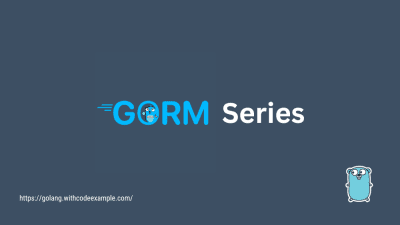Golang Redis: Building Efficient and Scalable Applications
- With Code Example
- December 21, 2023


The necessity for efficient data storage and retrieval has become critical in current application development. Enter Redis, a lightning-fast, open-source, in-memory data structure store that provides a reliable solution for a variety of application scenarios. In this complete guide, we’ll learn what Redis is, go through the easy process of installing Redis with Docker Compose, and master the art of integrating Redis with Golang. By the end of this exploration, you’ll be able to use the synergies between Golang and Redis to build performant and scalable apps.
What is Redis?
Redis Unveiled:
Redis, which stands for Remote Dictionary Server, is a sophisticated key-value store noted for its speed and flexibility. Because of its support for numerous data structures such as strings, hashes, lists, sets, and more, it is frequently referred to as a data structure server. Redis’ in-memory nature makes it an excellent solution for scenarios requiring rapid data access, such as caching, real-time analytics, and session storage.
Key Features of Redis:
- In-Memory Storage: Redis stores data in RAM, allowing for lightning-fast read and write operations.
- Data Structures: Beyond simple key-value pairs, Redis supports complex data structures like lists, sets, and hashes.
- Persistence: While primarily an in-memory store, Redis provides options for persistence, ensuring data durability.
- Atomic Operations: Redis excels at atomic operations, making it an excellent choice for scenarios requiring transactional integrity.
Installing Redis with Docker Compose
Docker Compose Simplified:
Docker Compose is a tool for creating and running multi-container Docker applications. Using Docker Compose simplifies Redis deployment and configuration. Let’s go over how to install Redis with Docker Compose.
Step 1: Create a Docker Compose File
# docker-compose.yml
version: '3'
services:
redis:
image: "redis:latest"
ports:
- "6379:6379"
Step 2: Run Docker Compose
docker-compose up -d
Explanation:
- The
docker-compose.ymlfile defines a service namedredisusing the official Redis image from Docker Hub. - The
portssection maps port6379on the host to port6379on the container. - Running
docker-compose up -dlaunches Redis in the background.
With these simple steps, you have a fully functional Redis instance up and running.
How to Use Redis with Golang
Golang and Redis Integration:
Golang, with its simplicity and efficiency, pairs seamlessly with Redis. Let’s explore how to integrate Redis with a Golang application.
Step 1: Install Redis Library for Golang
go get -u github.com/go-redis/redis/v8
Step 2: Use Redis in Golang Code
package main
import (
"context"
"fmt"
"github.com/go-redis/redis/v8"
)
func main() {
// Connect to Redis
client := redis.NewClient(&redis.Options{
Addr: "localhost:6379", // Redis server address
Password: "", // No password
DB: 0, // Default DB
})
// Ping Redis to check the connection
pong, err := client.Ping(context.Background()).Result()
if err != nil {
fmt.Println("Failed to connect to Redis:", err)
return
}
fmt.Println("Connected to Redis:", pong)
// Set and Get a key-value pair
err = client.Set(context.Background(), "greeting", "Hello, Redis!", 0).Err()
if err != nil {
fmt.Println("Failed to set key:", err)
return
}
val, err := client.Get(context.Background(), "greeting").Result()
if err != nil {
fmt.Println("Failed to get key:", err)
return
}
fmt.Println("Value for key 'greeting':", val)
}
Explanation:
- The
go-redislibrary simplifies Redis interactions in Golang. - The code connects to a Redis server, performs a ping to ensure connectivity, sets a key-value pair, and retrieves the value.
This example showcases the fundamental operations, but Redis and Golang offer a multitude of functionalities for more complex scenarios.
Transitioning from Theory to Practice
Now that we’ve covered the theoretical aspects of Redis and implemented a basic integration with Golang, let’s delve into practical use cases and advanced scenarios.
Real-Time Analytics with Redis:
Redis is an attractive contender for real-time analytics because to its lightning-fast data retrieval. Consider the following scenario: user activities on a website must be recorded and analysed instantly. Redis sets may be used to store real-time user events, and Golang can consume this data for analytics reasons.
// Example: Real-time analytics with Redis in Golang
// ...
// Store user event in Redis set
err := client.SAdd(context.Background(), "user_events", "user123:click_button").Err()
if err != nil {
fmt.Println("Failed to store user event:", err)
return
}
// ...
In this example, a user event (e.g., a button click) is added to a Redis set in real-time. This set can then be queried for analytics insights.
Distributed Locks with Redis:
Distributed systems frequently require synchronisation, and Redis supports distributed locks. Redis locks can be used by Golang apps to coordinate activities across several instances.
// Example: Distributed locks with Redis in Golang
// ...
// Attempt to acquire a lock
lockKey := "resource_lock"
isLocked, err := client.SetNX(context.Background(), lockKey, "locked", 10*time.Second).Result()
if err != nil {
fmt.Println("Failed to acquire lock:", err)
return
}
if isLocked {
defer client.Del(context.Background(), lockKey)
// Perform the critical section
fmt.Println("Lock acquired. Performing critical section.")
} else {
fmt.Println("Failed to acquire lock. Another process is holding it.")
}
// ...
In this example, the Golang application attempts to acquire a lock on a resource using Redis. If successful, it performs a critical section, ensuring exclusive access.
Conclusion
We’ve negotiated the terrain of Golang with Redis integration in this comprehensive tutorial. From studying the principles of Redis to easily deploying it using Docker Compose and eventually integrating it with Golang, you now have the expertise to properly use these technologies.
Consider the various options that Golang and Redis provide as you begin on your path of Golang and Redis exploration—from real-time analytics to distributed locking. The collaboration of Golang with Redis allows for the development of resilient, scalable, and high-performance applications.
May your Golang and Redis adventures be fruitful, and may your code serve as a monument to the harmonic balance between simplicity and efficiency in modern application development. Have fun coding!








